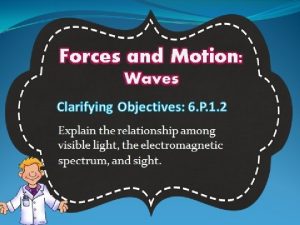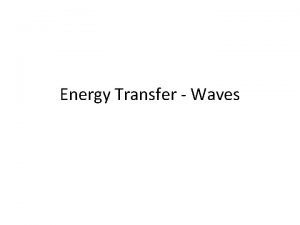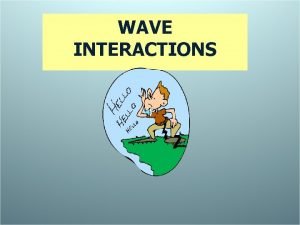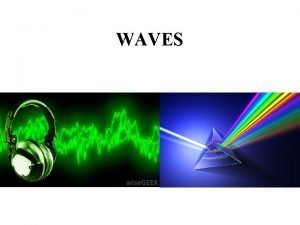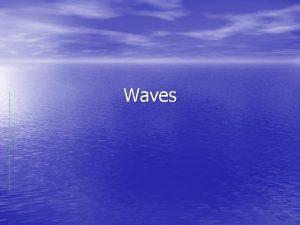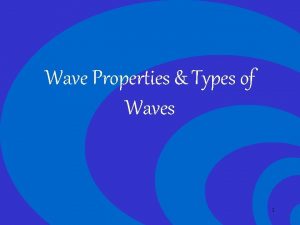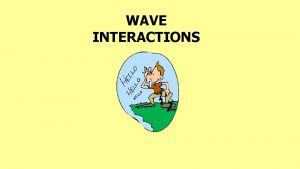Wave Review Waves in General Waves transfer energy







- Slides: 7

Wave Review

Waves in General • Waves transfer energy NOT matter • Waves can be at more than one location at one time and more than one wave can be at the same location at one time. • Types of Waves • Transverse waves vibration is in a direction perpendicular to the direction of wave propagation • Longitudinal waves vibration is in the same direction as the wave’s propagation • Mechanical waves require a medium to travel while electromagnetic waves do not.

Wave Variables • Wavelength is the distance between two parts of a wave at the same point of vibration measured in meters. (peak to peak or trough to trough distance) • Amplitude=1/2 the distance from peak to trough, measures energy of wave. Measured in meters. • Frequency =number of wavelengths that pass a point in second. Measured in hertz • Period=Time for one wavelength to pass or object to complete one vibration, measured in seconds. • Velocity = measurement of how fast a wave front spreads out or propagates; measured in meters/second.

Wave Phenomenon Phenomena Description Examples Interference Waves at same place at same time add or subtract via superposition Bright and dark fringes after light passes through 2 or more openings, sound beats Diffraction Bending of wave due to it passing through a single opening or around edge of object. Water waves bending after passing through break water, penumbra of shadow Refraction Bending of wave due to it changing speed as it passes from one medium to another. Bending of spoon by glass of water, mirages, lenses Doppler Effect Apparent change of frequency and wavelength of wave due to the relative motion between wave source and receiver. Ambulance sound as it approaches and recedes, blue and red shifts of light Polarization Selection of one vibrational orientation of transverse wave Polarizing Filters

Wave Relationships • Velocity of wave = frequency x wavelength • Period of wave = 1 / frequency of wave • Energy of wave is proportional to the amplitude squared

Sound Waves • Mechanical, longitudinal wave due to energy moving through a material. Cannot be polarized or travel through a vacuum. • Humans hear the frequency as pitch and amplitude as loudness of a sound wave. • Speed of soundwave changes with the medium it is in. Sound travels faster in more dense media • Beats are a form of interference

EM (Light) Waves • Transverse electromagnetic wave cause by the acceleration (vibration) of an electrical charge. EM waves can be polarized and can travel through a vacuum. • Radio waves, microwaves, infrared, visible light, ultraviolet, x rays, gamma rays • Travels at 300 000 m/s in a vacuum • Speed varies with the medium it is traveling. Fastest for media with less density, fastest in a vacuum.
 Energy energy transfer and general energy analysis
Energy energy transfer and general energy analysis Energy energy transfer and general energy analysis
Energy energy transfer and general energy analysis How are rainbows made
How are rainbows made Transfer of energy when a wave disappears into a surface
Transfer of energy when a wave disappears into a surface Waves and energy transfer
Waves and energy transfer Waves transfer energy without transferring matter
Waves transfer energy without transferring matter Rate of energy transfer by sinusoidal waves on strings
Rate of energy transfer by sinusoidal waves on strings Repeating disturbances that transfer energy through
Repeating disturbances that transfer energy through



